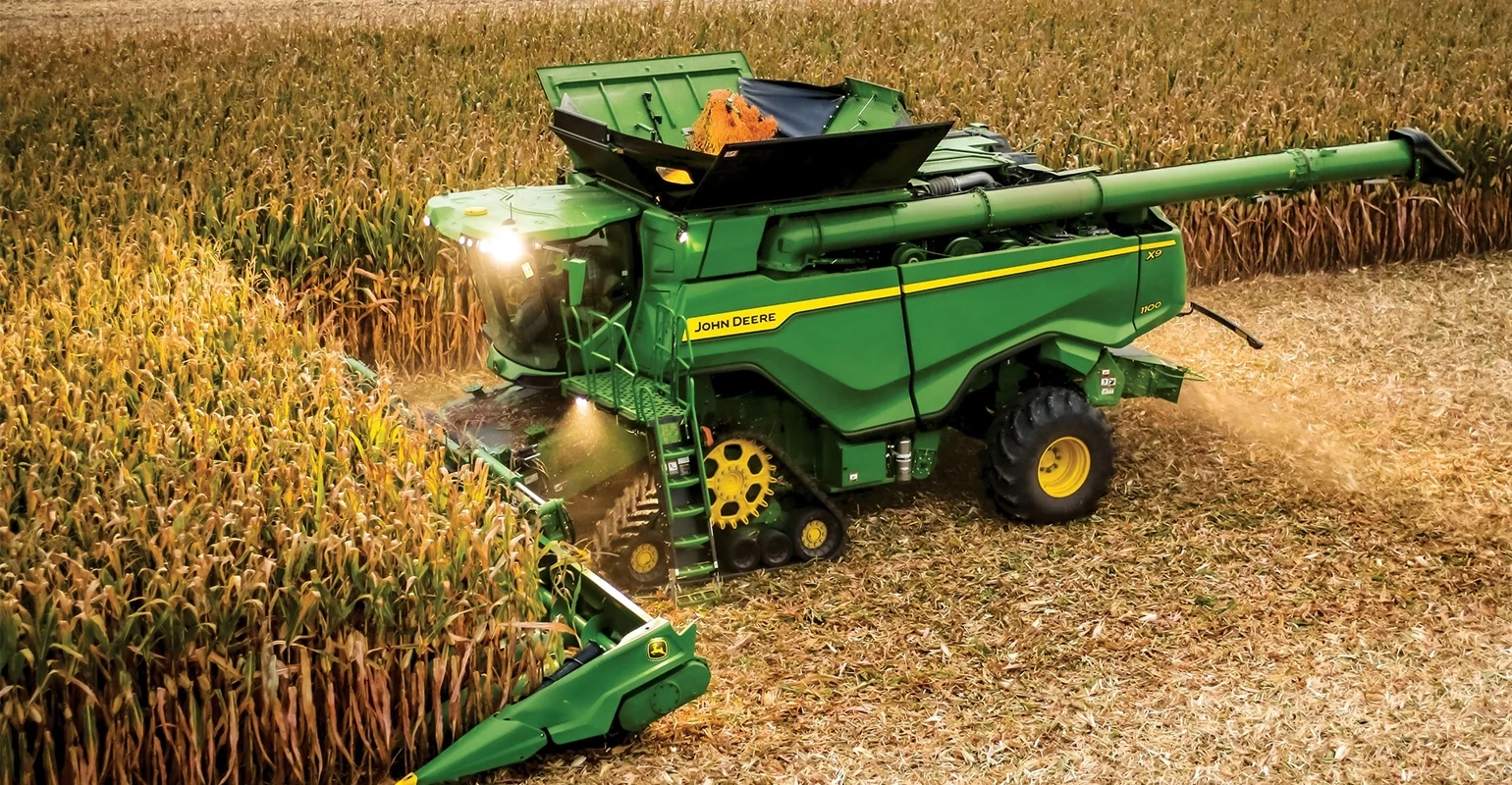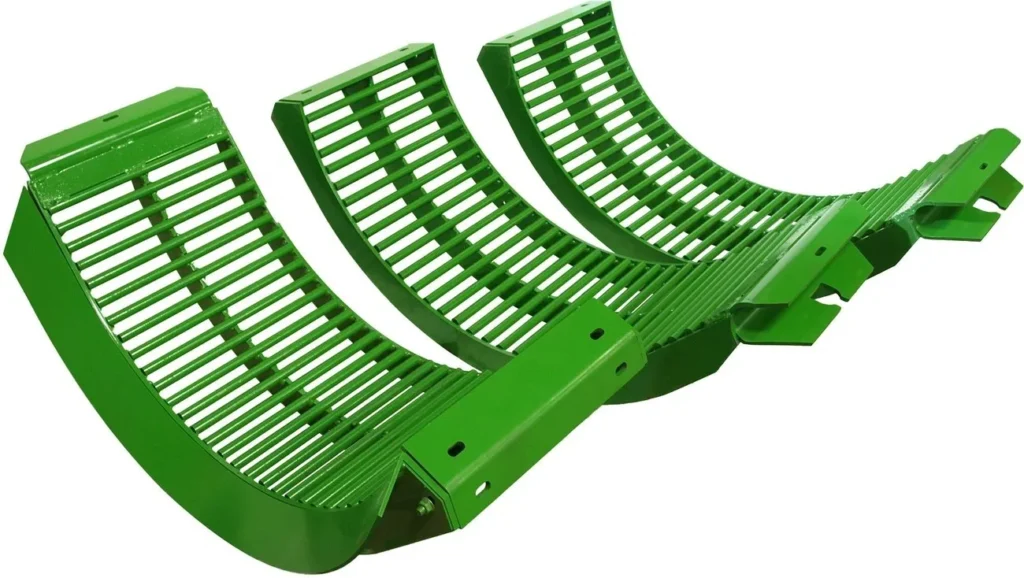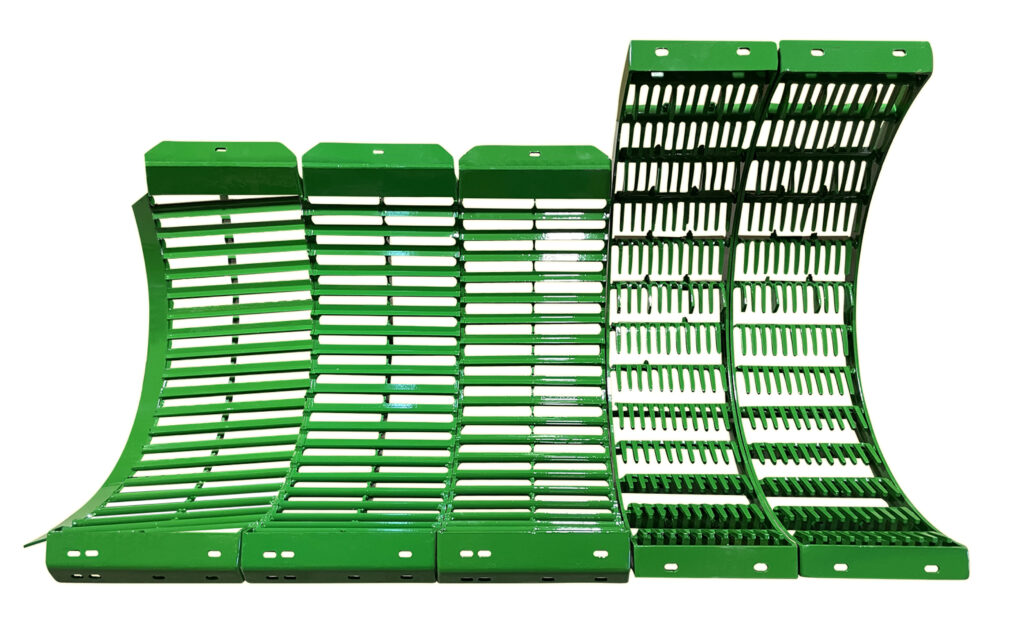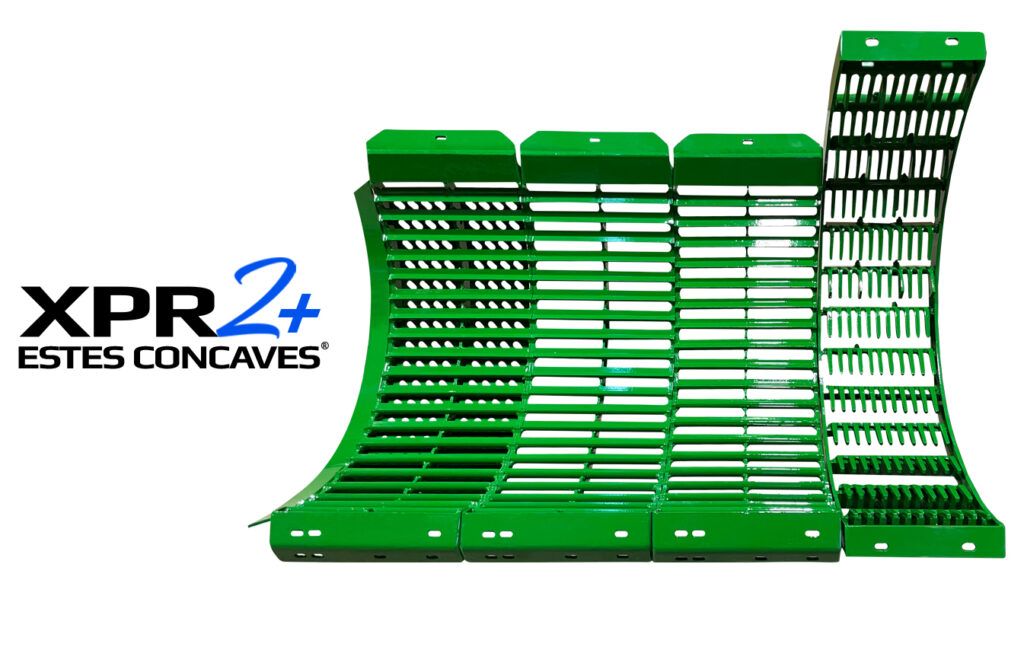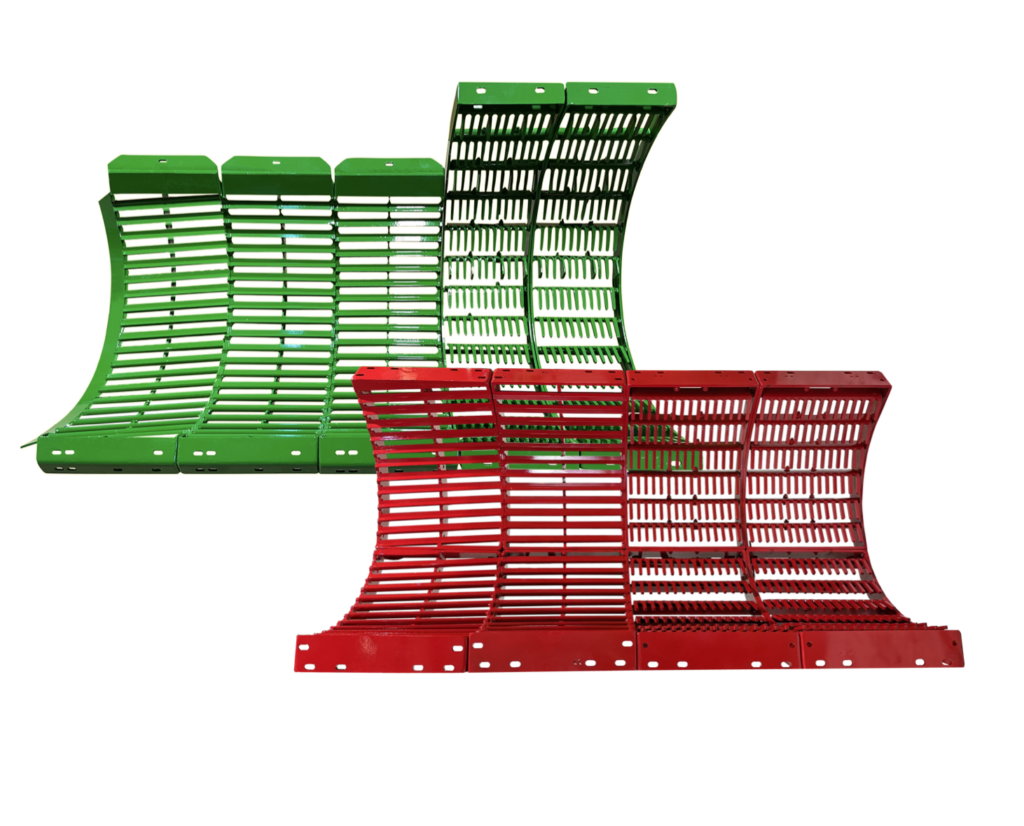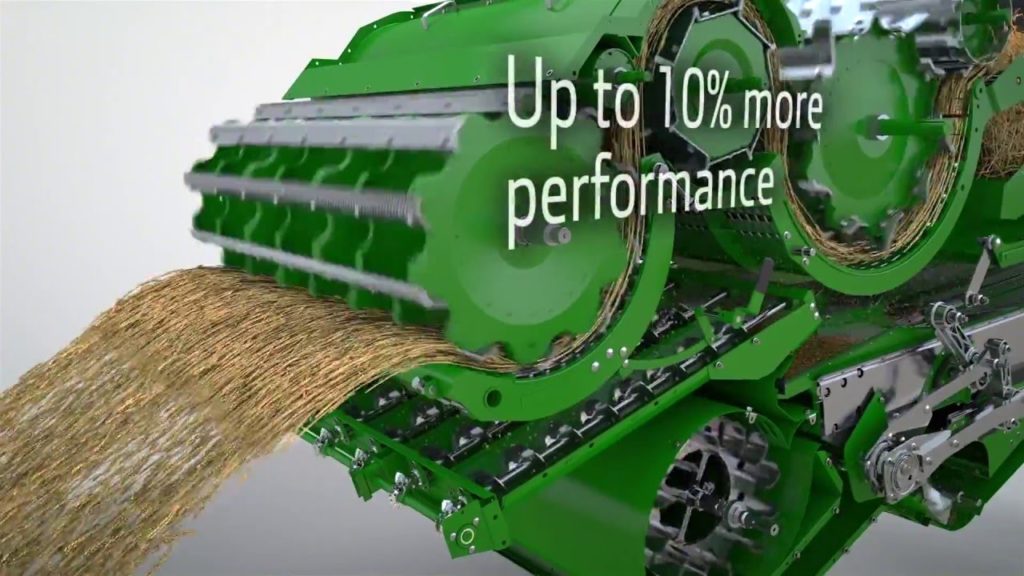Combine harvesters rely on one critical component that makes or breaks your harvest success – the concave. The concave is the cornerstone of threshing, yet many farmers overlook its importance when operating these massive 15-ton agricultural machines.
I’ve seen firsthand how the right concave can transform performance. During side-by-side testing of John Deere S780s, S790s and Case IH 8250s, combines equipped with the XPR 2+ concave system operated at 180% capacity compared to those with standard OEM concaves. Even more impressive, they produced seed-quality grain samples with no loss.
With several combine types now available in the market – from conventional models to rotary combines with axial-flow systems – choosing the right concave becomes increasingly complex. Manufacturers like International Harvester, John Deere, Belarus Niva, White, and Massey Ferguson all offer different combine models, each potentially requiring specific concave configurations.
In this guide, we’ll explore seven essential concave types that can significantly improve your crop yield, reduce grain damage, and ultimately boost your bottom line. Whether you’re managing a small farm or large agricultural operation, understanding these concave options will help you make informed decisions for your next harvest.
Round Bar Concaves
Round bar concaves stand as one of the most versatile threshing components in the modern combine harvester arsenal. These specialized concaves, distinguished by their solid round steel bars and absence of wires, have become a staple choice for many farmers tackling high-moisture crops.
Round Bar Concaves overview
The fundamental design of round bar concaves features round cross bars that contrast with the traditional square-edged bars found in other concave types. This seemingly minor design difference creates a significant impact on threshing performance. In the harvesting process, friction occurs among the rotating cylinder, incoming crop, and the concave, resulting in effective grain separation.
For combines, the concave serves as the cornerstone of threshing—it’s literally the heart of the machine whose entire purpose is to thresh crop. The clearance between the cylinder and concave remains adjustable, allowing for customization based on crop conditions. As crops enter this space, they get compressed against the concave, causing smaller grain parts to sift through the openings.
Best use cases for Round Bar Concaves
I’ve found round bar concaves particularly excel with corn and soybeans. They’re specifically designed for handling field corn, especially at moisture levels exceeding 25%, which makes them invaluable during challenging harvest conditions. Additionally, they perform admirably with popcorn and food corn.
While their specialty lies in row crops, round bar concaves work adequately on wheat, small grains, barley, and canola. This versatility makes them practical for farms growing diverse crop types without wanting to switch concaves frequently.
For specialty harvesting situations, these concaves truly shine. They’re the standard equipment for food corn and edible beans, offering maximum grain productivity while maintaining harvest quality. Furthermore, they enable versatility when harvesting cereal grain crops if paired with aftermarket concave inserts.
Performance benefits of Round Bar Concaves
The primary advantage of round bar concaves is their ability to provide exceptional threshing action while minimizing grain damage. This balanced performance protects crop quality—a crucial factor for farmers producing for premium markets.
Front round bar concaves can separate up to 90% of grain from crop material, ensuring efficient threshing for optimal harvesting performance. Moreover, they offer enhanced threshing action that improves crop material processing, promoting thorough grain separation and reducing loss.
In particular, round bar concaves demonstrate superior performance in challenging conditions. They’re less likely to plug in wet or green conditions, a common issue that can halt harvest operations and cause significant delays. This capability alone makes them worth considering for regions with unpredictable weather patterns.
Compatibility with combine harvester models for Round Bar Concaves
Round bar concaves have broad compatibility across major manufacturers. For John Deere, they fit numerous models including:
- S Series: S650, S660, S670, S680, S685, S690, S760, S770, S780, S785, S790
- 9000 Series: 9650, 9660, 9670, 9750, 9770, 9860, 9870, 9880
Case IH compatibility encompasses:
- AFX8010, 7010, 7120, 7230, 7240, 7250
- 8010, 8120, 8230, 8240, 8250
- 9120, 9230, 9240, 9250
Essentially, no matter if you operate a John Deere or Case IH combine, round bar concaves represent a readily available option.
Pricing and availability of Round Bar Concaves
The investment for quality round bar concaves varies by manufacturer and model. As an example, a Case IH Round Bar Right Hand concave is priced at $371.13 (reduced from $375.00). This pricing generally reflects the market standard for quality concaves.
Many manufacturers offer extended wear options for those seeking longer-lasting performance. John Deere, for instance, provides extended wear round bar concave kits, which might carry a premium price but offer better longevity in harsh conditions.
Availability is generally excellent, with these concaves being standard offerings from both OEM manufacturers and aftermarket suppliers. In fact, most rotary combine harvester manufacturers include round bar concaves in their product lines.
Expert tips for using Round Bar Concaves
Based on experienced farmer practices, here are some strategic approaches to maximize round bar concave performance:
- For high-moisture corn harvesting, consider switching out two or three large wires for round bar concaves upfront to thresh kernels more effectively.
- If you’re harvesting both wheat and corn, pair round bar concaves with helical bar concaves in the front position for enhanced threshing efficiency with small grains.
- For challenging soybean harvests with green pods, try adding concave inserts in the first 5 slots. These inserts reduce the gap between round bars, ensuring only fully threshed soybeans pass through.
- Some farmers pull every other wire in the first concave to help corn exit the rotor faster, allowing the second and third concaves to finish the threshing process.
- Installing cover plates in the first 12 inches of the concave for green soybean pods forces beans to rub against other beans, substantially reducing unthreshed pods in the tank.
Through proper implementation of these techniques, I’ve seen substantial improvements in both efficiency and grain quality—the two metrics that ultimately determine harvest success.
Small Wire Concaves
Small wire concaves represent a precision solution in the combine harvester’s threshing system, designed with tightly spaced wires that excel at processing smaller kernels. These specialized components do 100% of the threshing and up to 90% of the separation of grain from stems, pods, or cobs.
Small Wire Concaves overview
The fundamental design of small wire concaves features wires running perpendicular to heavy-duty cross bars, creating a configuration specifically calibrated for smaller grains. This structure allows tiny kernels to descend through the concave while ensuring chaff continues toward the rear of the combine. Unlike other concave types, small wire concaves maintain closer spacing between wires, creating a more intensive threshing environment.
The strategic spacing in small wire concaves prevents grain loss by optimizing the separation process. This design consideration makes them substantially different from round bar concaves, which offer wider spacing better suited for larger crops. As John Deere notes, correct concave selection significantly affects the entire operation of the combine.
Best use cases for Small Wire Concaves
Small wire concaves truly shine when harvesting specific crops:
- Canola and grass seed – These concaves are ideal for these crops, earning “best” ratings from manufacturers
- Small grains with brittle straw – They work excellently with wheat, barley, and other fine cereals
- Delicate seeds – Crops like millet and clover benefit from the precision threshing action
However, according to manufacturer guidance, small wire concaves are not recommended for corn harvesting. Their configuration is specifically tailored for maximum efficiency with small grains rather than larger crop components. Likewise, they aren’t preferred for rice, popcorn, milo, food corn, or sorghum.
Performance benefits of Small Wire Concaves
The primary advantage of small wire concaves lies in their ability to maintain sample cleanliness. In real-world scenarios, farmers switching from round bar to small wire concaves reported immediately noticeable improvements in sample quality. Consequently, this cleaner grain requires less post-harvest processing and often commands better market prices.
Apart from sample quality, small wire concaves offer superior threshing performance with small grains without diminishing capacity. As one farmer testimonial indicates, after seeing the sample comparison between small wire and round bar concaves, a colleague immediately ordered small wire concaves for his own machine.
The durability of small wire concaves also stands out as a key benefit. Many farmers report they can withstand considerable wear and tear, demonstrating greater longevity than some alternative concave types. This durability translates to better return on investment despite their specialized nature.
Compatibility with combine harvester models for Small Wire Concaves
Small wire concaves are available for most major combine harvester brands, though specific part numbers vary by manufacturer and model. For John Deere combines, small wire concave kits are manufactured as OEM parts, ensuring perfect compatibility with their equipment. Case IH also offers dedicated small wire concaves designed specifically for their combine models.
The dimensions of these components vary by manufacturer. For instance, a John Deere small wire concave kit measures approximately 41 inches in length, 24.5 inches in width, and 17 inches in height. This specification helps ensure proper fit within the threshing system.
Pricing and availability of Small Wire Concaves
Standard small wire concaves represent a significant investment. A John Deere OEM small wire concave kit weighs approximately 245.5 pounds, reflecting their substantial construction. For extended wear applications (400+ hours) or abrasive crop conditions like rice, manufacturers offer enhanced versions that come at a premium price point.
Although exact pricing fluctuates with market conditions, small wire concaves generally cost more than standard options due to their specialized design and materials. Yet many farmers consider them essential equipment rather than optional upgrades, particularly those harvesting significant acreage of small grains.
Expert tips for using Small Wire Concaves
Drawing from experienced farmer practices, here are strategic approaches to maximize small wire concave performance:
- Consider crop rotation patterns before investing. If you harvest substantial acres of small grains annually, the performance benefits typically justify the investment.
- For tougher threshing small grain varieties, small wire concaves make a “night-and-day difference” compared to standard options, particularly in maintaining sample cleanliness.
- Avoid using cover plates whenever possible, as they can unnecessarily restrict capacity without improving performance in most conditions.
- For mixed farming operations, some operators successfully modify small wire concaves for corn by removing two wires and leaving one wire, though this may risk wire bending with heavy material loads.
- When harvesting wheat varieties that thresh easily, round bar concaves with interrupter bars might provide adequate performance while maintaining higher capacity than small wire configurations.
Through thoughtful implementation of these techniques, farmers can extract maximum value from their small wire concave investment while optimizing both grain quality and operational efficiency.
Large Wire Concaves
The versatility of large wire concaves makes them a popular choice among farmers seeking balanced performance across multiple crop types. These specialized threshing components feature wider spaces between wires, creating a design that excels with larger grain varieties yet remains adaptable enough for diverse farming operations.
Large Wire Concaves overview
Large wire concaves consist of wires positioned perpendicular to robust cross bars, similar to small wire configurations but with significantly wider gaps between the wires. This design deliberately allows ample space for larger materials to be efficiently threshed, facilitating the unhindered passage of bigger grains through the concave without risking plugging or processing inefficiencies.
The structure’s purposeful spacing enables it to handle substantial crop volumes while maintaining separation efficiency. Indeed, these concaves are meticulously engineered to optimize the threshing process specifically for larger kernels and grains. Their design represents a middle ground between the aggressive threshing action of specialized concaves and the versatility needed for multi-crop operations.
Best use cases for Large Wire Concaves
Large wire concaves excel primarily with crops producing larger seeds. They’re ideally suited for:
- Corn harvesting (though not recommended for corn exceeding 25% moisture)
- Soybeans, where their performance is particularly noteworthy
- Rice cultivation scenarios
- Sorghum fields
- Sunflower crops
Given these capabilities, large wire concaves offer a suitable all-purpose option for mixed-crop farms. Many operators report excellent results using these concaves as their primary configuration throughout the harvesting season, thereby eliminating the need to purchase additional concave sets or change concaves between different crops.
Performance benefits of Large Wire Concaves
The principal advantage of large wire concaves is their balanced threshing approach. In high-yielding corn, they provide more area for threshed crop to fall through to the cleaning shoe, subsequently reducing rotor loss. Yet these performance benefits extend beyond just corn harvesting.
For instance, in soybean harvesting, large wire concaves demonstrate superior threshing efficiency. Farmers report cleaner samples with virtually no pods remaining in the tank. This enhanced threshing action proves more aggressive than round bar alternatives, often eliminating the need for additional inserts or modifications.
Numerous operators notice improved grain quality output after installing large wire concaves. Several recommend removing every other wire to achieve the best possible grain quality. Nonetheless, these concaves do have limitations—particularly in wet conditions where leafy material and matting of green vegetation can reduce separation capacity.
Compatibility with combine harvester models for Large Wire Concaves
Large wire concaves are widely available for major combine harvester brands. For John Deere equipment, large wire concave kits (part number BXE10391) are readily accessible and designed for seamless integration. Similarly, Case IH offers large wire concave kits (part number 84237556) specifically formulated for their machines.
The physical dimensions vary by manufacturer and model. A typical John Deere large wire concave kit weighs approximately 999 pounds and measures 44 inches in length, 27 inches in width, and 20.5 inches in height. These specifications ensure proper fitment within the threshing system.
Pricing and availability of Large Wire Concaves
The investment for quality large wire concaves represents a significant but worthwhile expenditure. John Deere’s extended wear large wire concave kit (BXE10391) is priced at $3,731.59, reduced from $4,390.10. For Case IH equipment, large wire concave kit #84237556 is specifically designed for large or high-yielding crops.
Aftermarket options may provide cost savings, with some alternatives available for approximately $2,275.00. These price variations reflect differences in materials, construction quality, and expected longevity.
Expert tips for using Large Wire Concaves
After years of field experience, I’ve gathered several practical recommendations for optimizing large wire concave performance:
- When harvesting soybeans with green pods, set the concave slightly tighter than normal to effectively open the pods while maintaining grain quality.
- For corn harvesting with these concaves, consider setting them at approximately 3 mm over cob diameter to achieve optimal threshing without excessive kernel damage.
- If experiencing rotor loss with large wire concaves, follow the manufacturer’s recommendation to add additional large wire concaves until the issue resolves.
- For versatility across multiple crops, some farmers successfully pull every other wire in the first concave to help grain exit the rotor faster, allowing subsequent concaves to complete the threshing process.
- To enhance durability, some manufacturers offer surface treatment options that penetrate the concave with wear-resistant material, potentially doubling the service life.
Through strategic implementation of these techniques alongside proper concave selection, farmers can substantially improve both operational efficiency and grain quality—ultimately maximizing their return on investment across multiple crop types.
Slotted Concaves
Slotted concaves stand out in the combine harvester arsenal with their unique design featuring narrow, evenly spaced slots that significantly improve threshing performance for specific crop types. These specialized components represent a strategic choice for farmers dealing with particularly challenging harvesting conditions.
Slotted Concaves overview
The distinctive feature of slotted concaves is their smooth surface design coupled with narrow, evenly spaced slots. Unlike round bar or wire concaves, these slots are engineered to hold crop material longer in the threshing area, creating optimal conditions for complete separation. This architecture simultaneously reduces crop damage and improves feeding efficiency throughout the combine.
Structurally, slotted concaves limit the amount of straw and chaff entering the cleaning system, a critical factor in maintaining operational efficiency. Their design focuses on balancing thorough threshing with minimal grain damage, making them an excellent choice for farmers prioritizing both yield quantity and quality.
Best use cases for Slotted Concaves
Slotted concaves excel primarily with specific crop types:
- Durum and spring wheat varieties
- Shatter-resistant canola where germination is a concern
- Delicate crops requiring gentler threshing action
Notably, some manufacturers design slotted concaves to work interchangeably with other concave types like MaxThresh Concaves for coarse grain crops including corn and soybeans. This versatility extends their utility beyond specialized applications, offering farmers greater flexibility across diverse crop rotations.
Performance Benefits of Slotted Concaves
The primary advantage of slotted concaves is their ability to produce better quality straw while limiting chaff in the cleaning system. From a practical standpoint, this translates to cleaner grain samples and improved marketability of harvested crops.
Various studies indicate that rotor combines typically leave 4-5 bushels per acre in the field. Installing proper slotted concaves can dramatically reduce these losses, potentially saving farmers thousands of dollars across large acreages. As an illustration, the loss on 1,000 acres of soybeans could reach $32,000 without proper concave selection.
Another remarkable benefit is their effect on sample quality. The slotted design promotes grain-on-grain threshing, minimizing contact with metal components and reducing splits, cracks, and fines in the final product.
Compatibility with combine harvester models for Slotted Concaves
Slotted concaves are manufactured for most major combine brands with specific fitment options:
For Case IH combines:
- 1480, 1680, 1688, 2188, 2377, 2388, 2577, 2588, 5088, 5130, 5140, 5150, 6088, 6130, 6140, 6150, 7088, 7130, 7140, 7150
For International models:
- 1480, 1482
For New Holland/Ford equipment:
- AFX8010, 7010, 7120, 8010, 8120, 9120
The exact part numbers vary by manufacturer, with Case IH replacement part 191535C2 being a common option for many models.
Pricing and availability of Slotted Concaves
Slotted concaves represent a significant but worthwhile investment. Current market pricing includes:
- Case IH slotted grate concaves at approximately $389.00
- Similar slotted concaves for New Holland/Ford at £298.83 (approximately $385)
These components typically ship via LTL freight carriers due to their size and weight. Most manufacturers maintain adequate inventory, with typical availability being “usually ships in 1 to 2 days”.
Expert tips for using Slotted Concaves
Based on extensive field experience, I recommend several strategies to maximize slotted concave performance:
First, properly adjust your combine concave setting for each crop type, as different materials require specific clearances. For wheat and barley, set narrower clearances than for larger crops.
Second, consider using slotted concaves in conjunction with pod-busting cover plates when harvesting soybeans with high pod content. This combination forces pods to remain in the threshing area until fully threshed.
Third, for the toughest threshing conditions, place a slotted concave in position 1 (the first concave position) to maximize threshing effectiveness without increasing crop damage.
Finally, maintain your concaves properly by regularly inspecting for wear or damage, as perforated areas can develop holes that affect performance. A well-maintained slotted concave system will consistently deliver superior results throughout its service life.
Estes XPR 2 Concaves
The revolutionary Estes XPR 2 Concaves system breaks the traditional mold with its innovative design that serves multiple crops without seasonal changes. This next-generation concave technology from Estes Performance Concaves represents a significant advancement in harvesting efficiency across diverse agricultural operations.
Estes XPR 2 Concaves overview
The XPR 2 Concave features a uniquely engineered bar that maximizes threshing contact while keeping the rotor full. It combines the best aspects of small-wire and round-bar concaves, creating an optimal balance between thorough threshing and high capacity. Its construction includes extended-wear threshing bars for greater durability and a heavier, more robust 3/8″ Xtreme separation grate. The system’s most noteworthy characteristic is its ability to thresh all crops with a single concave setup, eliminating the need for seasonal changes.
Best use cases for Estes XPR 2 Concaves
First of all, XPR 2 concaves excel in multi-crop operations where switching between concave types is impractical. They perform exceptionally well in high-moisture corn (up to 30%) without plugging issues. In addition, they’ve proven effective for wheat, soybeans, milo, and sunflowers. As a result, they’re particularly valuable for operations transitioning between hard-threshing wheat with perfect samples to high-moisture corn in the same day. Nevertheless, some users report they may not be optimal for corn in certain conditions.
Performance benefits of Estes XPR 2 Concaves
The XPR 2 system delivers remarkable performance improvements:
- Generates 30% more horsepower
- Provides 140% more threshing area
- Eliminates rotor loss of 2-5 bushels per acre (up to $30,000 savings on 1,000 acres)
- Increases ground speed by 1-3 mph, finishing harvest 15% faster
- Produces cleaner grain with fewer splits, fines, and cracks
The improved design promotes grain-on-grain contact rather than grain-metal contact, significantly enhancing sample quality. Given these advantages, many top farmers rely on this system for food-grade corn and seed soybeans.
Compatibility with combine harvester models for Estes XPR 2 Concaves
The XPR 2 system is compatible with numerous combine harvester models, including:
For John Deere: S790, S780, S770, S760, S690, S680, S670, S660, S650, S550 and STS series including 9870, 9860, 9770, 9760, 9750, 9670, 9660, 9650.
For Case IH: 9240, 8240, 7240, 8230, 7230, 9230, 9120, 8120, 7120, 8010, 7010 and older models like 7140, 6140, 5140, 7088, 6088, 5088.
Pricing and availability of Estes XPR 2 Concaves
Currently, Estes XPR 2 concaves are in stock and readily available for purchase. While exact pricing isn’t specified in the sources, the manufacturer positions them as a cost-effective alternative to upgrading to a larger combine. The potential savings from reduced grain loss alone (approximately $30,000 on 1,000 acres) often justifies the investment.
Expert tips for using Estes XPR 2 Concaves
Based on user experiences, consider these recommendations for optimal results:
- For beans, start with rotor at 300, concave at 25, fan at 1250-1300, chaffer at 17, and sieve at 15.
- When transitioning from soybeans to corn, minimal adjustments are needed – primarily clearance changes rather than concave replacement.
- If experiencing excessive cob in the tank, opening the concave slightly may help improve separation.
- In high-moisture crops, take advantage of the ability to run with wider concave settings and slower rotor speeds to maintain sample quality.
Hard Thresh Concaves
Engineered specifically for the most stubborn crops, Hard Thresh Concaves incorporate nearly 50% more bars to tackle demanding threshing conditions. Their continuous bar design enables all three concaves to synchronize seamlessly, eliminating dead spots or interruptions in the threshing process.
Hard Thresh Concaves overview
Hard Thresh Concaves feature a leading design with continuous bars positioned 3/8″ above the wires for optimal threshing of resistant crops. They’re typically constructed with industrial-grade AR400 plate—2.4 times harder with 4 times the tensile strength of regular concaves—providing exceptional durability against rock ingestion plus wet, tough crop conditions.
Best use cases for Hard Thresh Concaves
Hard Thresh Concaves shine remarkably with:
- Wheat, especially spring varieties
- Flax harvesting
- Durum wheat
Above all, they’re designed for small grain applications under hard threshing conditions. Naturally, some wheat varieties like AAC Connery CWRS—known for excellent protein yet difficult threshing characteristics—benefit tremendously from these specialized concaves.
Performance benefits of Hard Thresh Concaves
Their primary advantage is the ability to retain material longer in the threshing area. Through adding filler plates to your concave, crops experience more rotation inside the rotor before falling into the chaffer. This extended contact time greatly enhances threshing effectiveness, eventually leading to cleaner grain samples.
Compatibility with combine harvester models for Hard Thresh Concaves
These concaves are widely available for:
- Case IH Flagship series (10/20/30/40)
- Case IH models including AFX8010, 7010, 7120, 7230, 8010, 8120, 9120
- John Deere combines with direct fit options
Pricing and availability of Hard Thresh Concaves
Pricing varies by manufacturer:
- Standard Hard Thresh elements: USD 900.00 each, USD 360.00 per set
- Case IH Hard Thresh concaves: USD 1,301.00
- Wildfong Hard Thresh: USD 1,400.00 (USD 600.00 savings versus USD 2,000.00 OEM)
- Bushel Plus MAD Hard Thresh Wheat Package: USD 3,900.00
Expert tips for using Hard Thresh Concaves
For optimal performance, harvest crops like AAC Connery when slightly tougher—just a couple moisture points higher than normal. Initially, set concaves tight enough to match incoming material volume without over-threshing. At this point, consider adding filler plates to increase material rotation time within the rotor. Constantly monitor your chaffer and fan settings to prevent whitecap loss, thereafter adjusting the bottom sieve so free grain falls through while whitecaps pass to the returns for re-threshing.
Multi-Crop Concaves
For farmers managing diverse crop rotations, multi-crop concaves offer a game-changing solution by eliminating the need to swap concaves between different harvests. This versatile option stands out as the time-saving alternative in the combine harvester market.
Multi-Crop Concaves overview
Multi-crop concaves feature a universal design that allows a single set to handle multiple crops without modification. The construction typically includes specialized bars that balance aggressive threshing with gentle grain handling. Most compelling evidence points to their innovative variable spacing system that adapts to different crop types without requiring additional parts like cover plates.
Best use cases for Multi-Crop Concaves
These concaves excel when harvesting a variety of crops including:
- Cereal grains (wheat, oats, rye)
- Oilseeds (canola, sunflower, sesame)
- Legumes (soybeans, chickpeas)
- Row crops (corn)
First thing to remember, they’re especially valuable for operations transitioning between crop types during the same harvest season, eliminating downtime previously spent changing concaves.
Performance benefits of Multi-Crop Concaves
In terms of productivity, multi-crop concaves can harvest approximately 5,000 bushels per hour. Of course, beyond quantity, they also produce cleaner grain samples. The harvesting speed increases by around 3 miles per hour, ultimately saving valuable time that can be redirected toward other farm operations.
Compatibility with combine harvester models for Multi-Crop Concaves
Multi-crop concaves are available for major combine brands, with John Deere offering their Multi-Crop Round Bar Concave (part #AXE67735). To clarify, Razors Edge concaves provide multi-crop performance for Case IH combines, which particularly excel in managing diverse crop types.
Pricing and availability of Multi-Crop Concaves
While exact pricing varies by manufacturer and model, these concaves represent a valuable investment considering their versatility across multiple crops. In truth, their ability to eliminate the need for multiple concave sets often justifies the initial cost through operational savings.
Expert tips for using Multi-Crop Concaves
For optimal results, adjust concave settings for each crop type—even with multi-crop concaves. In light of manufacturer recommendations, for beans start with rotor at 300, concave at 25, fan at 1250-1300. To put it differently, proper setting adjustments can significantly enhance performance while preventing unthreshed pods and excessive grain damage across various crops.
Conclusion
Choosing the right concave for your combine harvester undoubtedly makes the difference between an average harvest and an exceptional one. Throughout this guide, we’ve explored seven distinct concave types, each offering specific advantages for different crops and harvesting conditions. Round bar concaves excel with corn and soybeans, while small wire designs deliver superior results with canola and delicate seeds. Large wire concaves provide balanced performance across multiple crop types, whereas slotted versions significantly improve threshing while limiting chaff.
Advanced options like Estes XPR 2 concaves eliminate the need for seasonal changes, Hard Thresh concaves tackle the most stubborn crops, and Multi-Crop designs save valuable time during diverse harvests. The right concave selection can boost your operational capacity by up to 180%, reduce grain loss worth thousands of dollars per thousand acres, and dramatically improve sample quality.
My years of experience have taught me that concave selection deserves as much attention as any other aspect of combine setup. Many farmers overlook this critical component, instead focusing on other machine settings when troubleshooting performance issues. The concave truly functions as the heart of your combine’s threshing system – without the right one, you’ll never achieve optimal results regardless of other adjustments.
Before your next harvest season, take time to assess your specific crop needs, combine model compatibility, and performance goals. Though quality concaves represent a significant investment, their impact on efficiency, grain quality, and ultimately your bottom line justifies the cost many times over. The perfect concave pays for itself through increased productivity, reduced losses, and better crop samples that command premium market prices.

